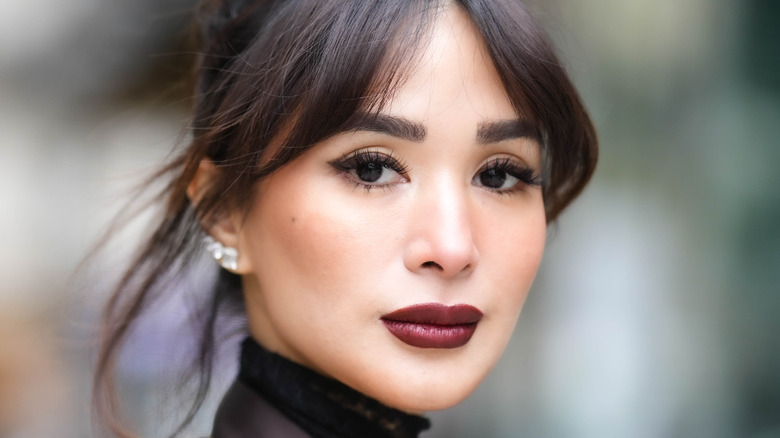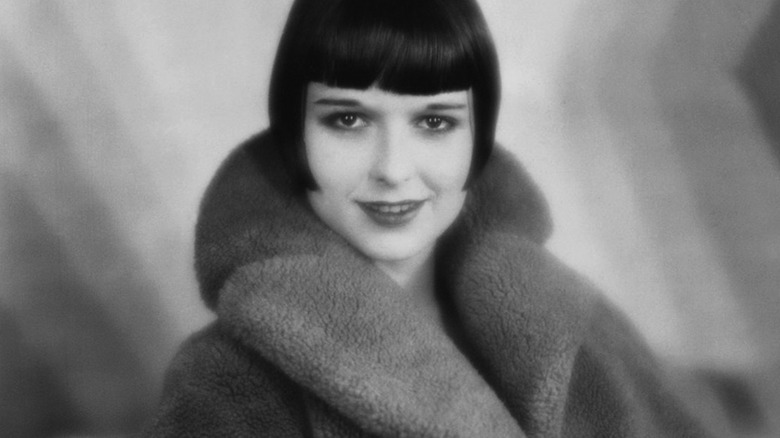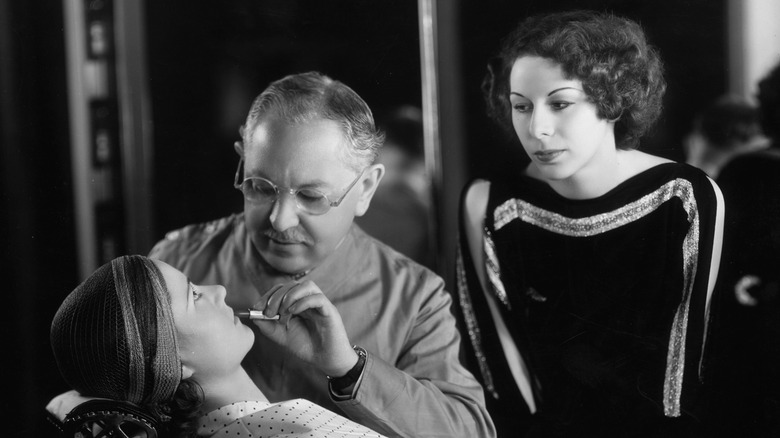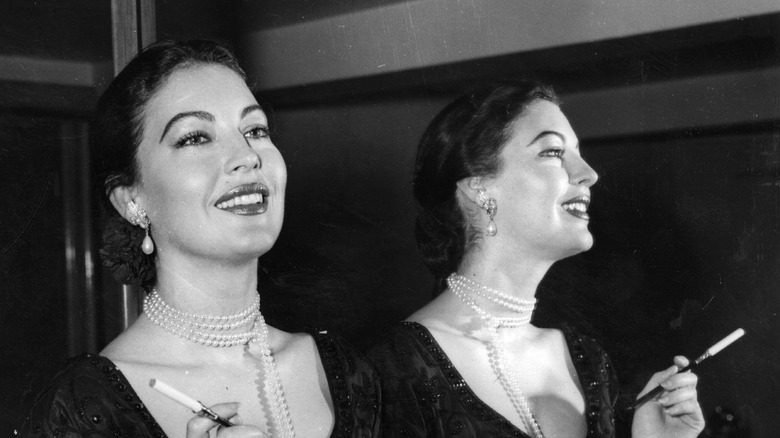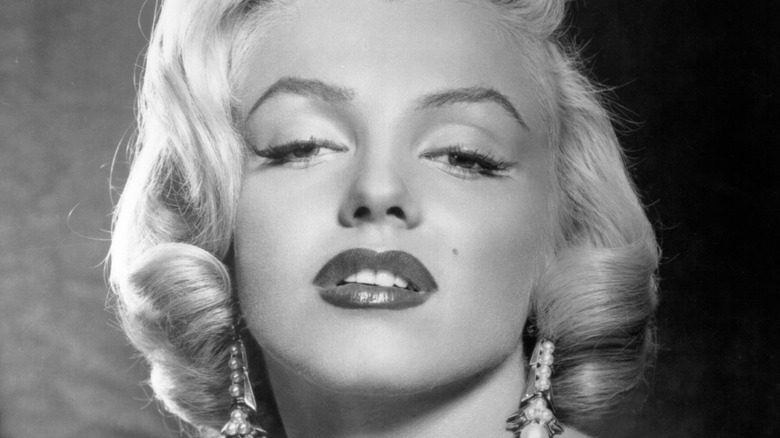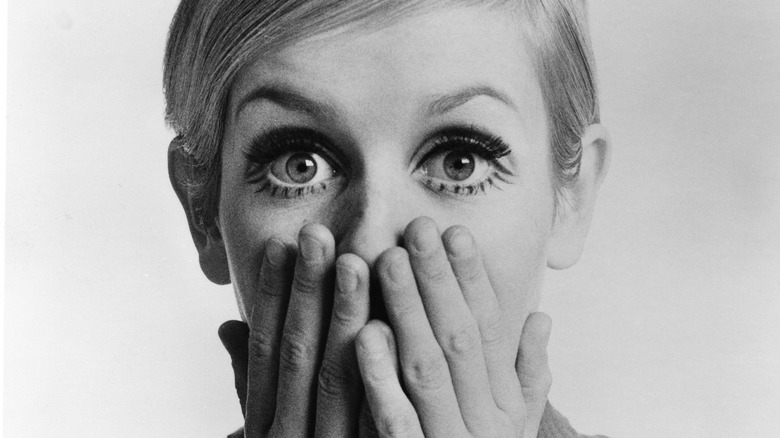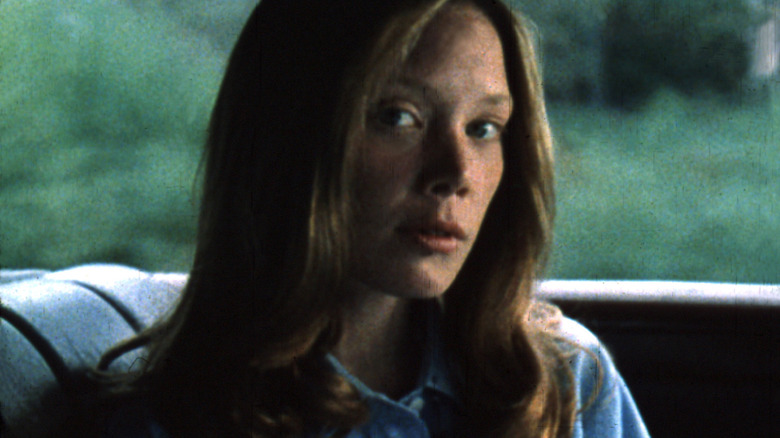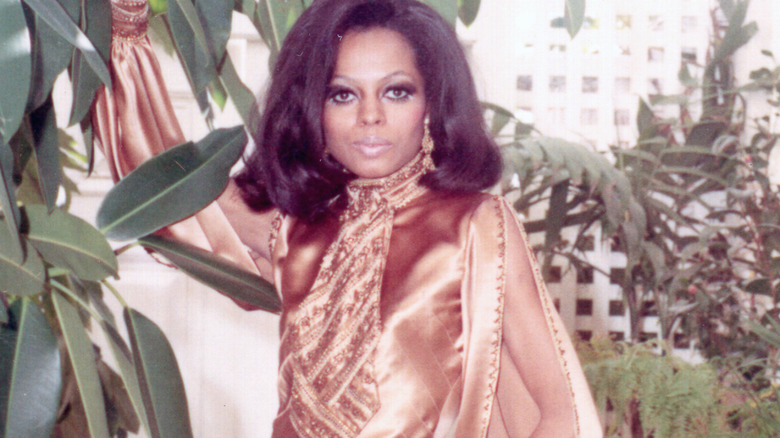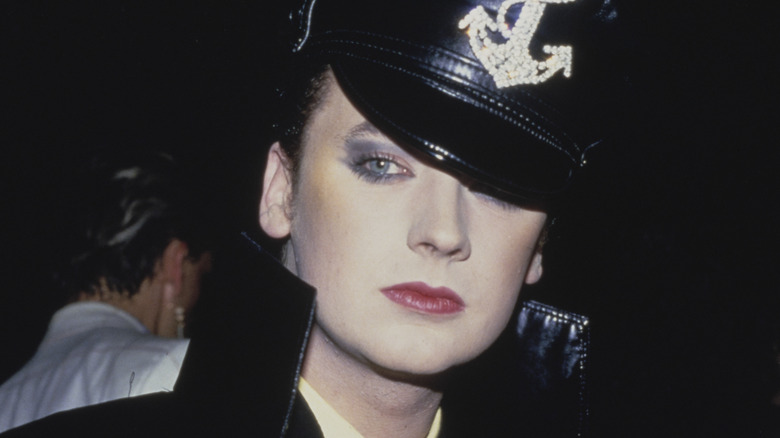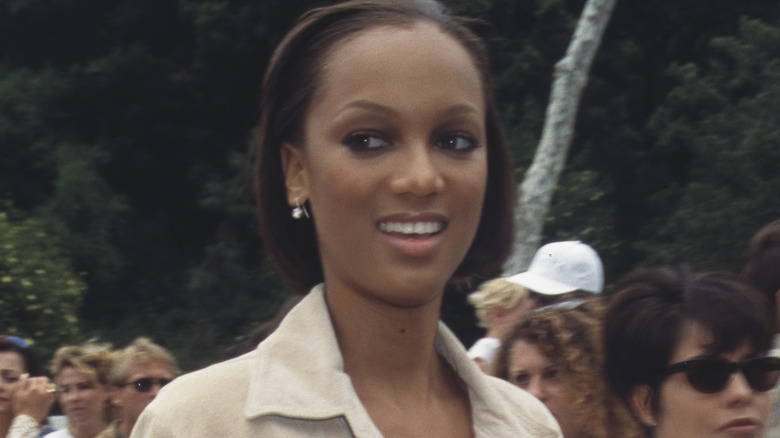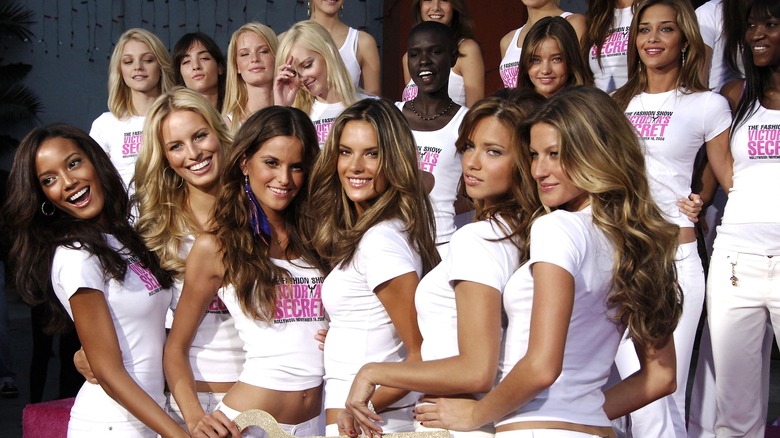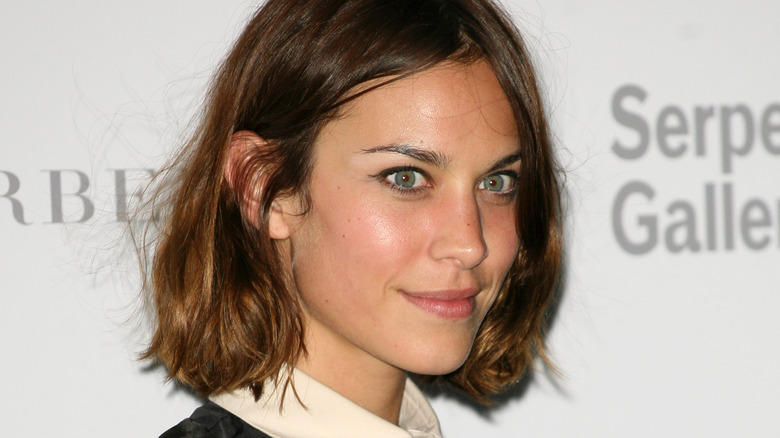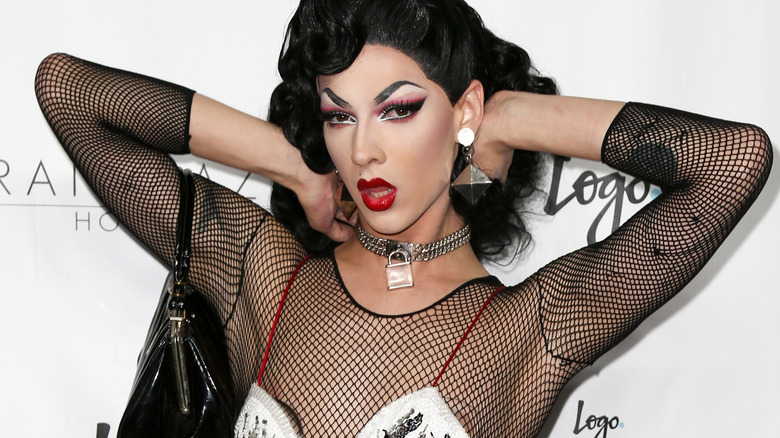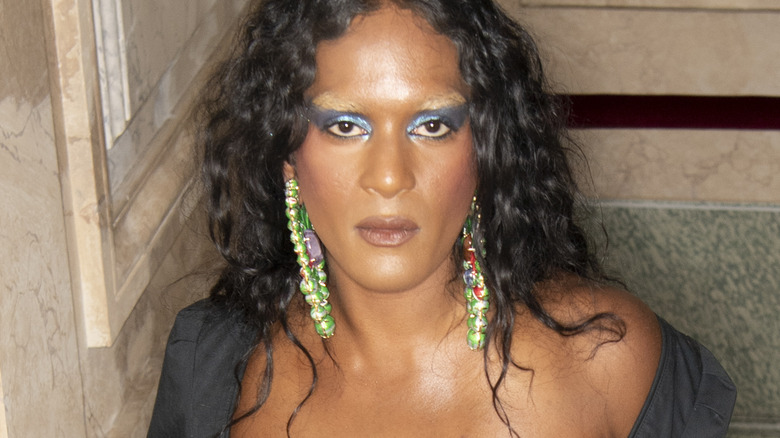100 Years Of Eyeliner
The modern consumer has more eyeliner choices than ever. Pencil eyeliners similar to the ones used in the '40s are still around, as are their modern versions, such as retractable pencils with creamy, highly pigmented formulas. Liquid liners also come in several formats, while reliable, high-pigmented powders and brushes are on the shelves, too. When it comes to color, bright pastels and neons have entered the conversation as well.
But how did we get here? A century ago, the art of eyeliner was brought into being through, like most inventions, necessity. The history of eyeliner is married to the history of early silent cinema. Then, in its next phase, eyeliner gets its wings and proliferates with the rising popularity of mass media, publications, and global advertising. This culminates in its status as one of the most highly regarded, most useful tools in the feminine tool kit. Trends come and go: novelties enjoyed today are hated tomorrow, yet some products preserve. We'll always use lipstick, mascara, and eyeliner in one form or another, though we'll constantly be re-inventing how we use these items in order to create different effects.
1920-1929: Eyes do the talking during the silent film era
By 1915, Hollywood was employing over 15,000 workers in the growing motion-picture business. Silent pictures were big business and it became more and more evident that this was an industry that was here to stay. Movies changed the way in which people sought entertainment. Theater and vaudeville grew less and less popular, especially during the Great Depression. Going to see a movie was more affordable than others types of entertainment, and the public became obsessed with this technological revolution in storytelling.
Early black-and-white cameras had a difficult time picking up subtler tones, so makeup was used to enhance facial features. Grease paint was used to heavily line the eyes and lips were painted black so that they could be picked up by the camera. Silent-era films often conveyed emotion and storytelling through the close-up facial expressions of their actors. Bold, kohl-lined eyes allowed for these facial expressions to translate drama on the screen.
1930-1939: A market is born — makeup for the masses
Although the makeup worn by the actresses on the silver screen was worn with the intention of camera visibility, this did not stop women all over the world from being inspired by what they saw. This environment allowed Hollywood makeup artist Max Factor to develop a product line and company to sell the makeup he developed and used working in the entertainment industry, including the products he used to create the bold eyeliner looks for black and white films. Factor was known for his expertise in color theory, and he developed a system of color harmony that he used for the products. This system involved matching the makeup colors to the natural tones of the skin and hair, and it helped women achieve a natural, flattering look.
By the 1930s, Maybelline was already a major player in the cosmetics industry, and in 1932, the brand introduced and sold the first automatic eyeliner pencil. The pencil was called the Eazy Lash Eyeliner and was a revolutionary product at the time. It was a self-sharpening pencil that could be twisted up to reveal more product, eliminating the need for a separate sharpener. The product was also waterproof and long-wearing, which made it popular with women who wanted long-lasting, smudge-proof eyeliner. Maybelline used Clara Bow, a popular actress of the time, to advertise its products since she was famous for her doe-like eyes.
1940-1949: Elevating the natural with the artificial, naturally
Makeup in the 1940s was heavily influenced by the glamorous Hollywood stars of the time. Through movies and print publications, these women set the beauty standard for women all over the world. Technological advances had improved the image quality of motion pictures, so it was no longer necessary for actors and actresses to heavily line their eyes with kohl liner for their expressions to be captured on camera. The eyeliner trends of the 1940s were characterized by a more natural, subtle look that emphasized the shape of the eyes without being too bold or dramatic. Women in the 1940s would typically apply eyeliner along the entire length of the upper lash line, creating a thin, defined line that followed the natural curve of the eye. Dark eyeliner was also used on the lower waterline to add a touch of sultry glamor.
The eyeliner of the 1940s was typically applied with a small brush or pencil, and the line was often smudged slightly for a softer, more natural look. Women would also use eyeshadow to contour and define the eyes, often using a darker shade in the crease and a lighter shade on the lid. Overall, the eyeliner trends of the 1940s were all about creating a subtle, sophisticated look that emphasized the natural beauty of the eyes.
1950-1959: Eyeliner sharp enough to kill a man
Makeup in the 1950s was influenced by the glamour of Hollywood and the elegance of post-war fashion. It was a time when women embraced femininity and glamour, and makeup was an important part of achieving that look. One of the most iconic makeup trends of the 1950s was the "cat-eye" or "winged" eyeliner. Women extended the shape of their eyes using eyeliner and would use it to create a dramatic flick at the outer corners of their eyes, which added a touch of glamour and sophistication to their overall look.
The winged eyeliner of the 1950s was characterized by a thin, precise line that extended outward and upward, following the natural curve of the eye. The wing was typically not too long or too exaggerated, but it still created a noticeable effect that added interest to the eyes. To achieve this look, women would typically start at the inner corner of the eye and draw a thin line along the lash line, gradually thickening it as they moved toward the outer corner. At the outer corner, they would then extend the line outward and upward, following the natural curve of the eye and ending in a flick or wing. The eyeliner was usually applied to the upper lid only, and the lower lash line was left bare or simply smudged with a bit of eyeshadow for a softer look.
1960-1969: Exaggerated eyes of the atomic age
The 1960s brought about a major shift in makeup trends, and eyeliner played a central role in this new look. The iconic eyeliner trend of the 1960s was known as the "mod" look, and it was all about creating bold, graphic lines that emphasized the eyes and created a dramatic effect. The mod eyeliner look was characterized by a thick, black line that extended beyond the outer corner of the eye and often featured a bold, exaggerated wing. The line was typically applied with liquid eyeliner, which allowed for precise application and a smooth, clean finish. The lower lash line was also often lined with a thick, black line, which added to the dramatic effect of the look.
Other variations of the mod eyeliner look included double lines, where two lines were applied along the upper lash line, or the "Twiggy" look, named after the iconic model, which featured long, spiky lashes and a thick line along the upper lash line. Ultimately, eyeliner trends of the 1960s were all about creating a bold, statement-making look that emphasized the eyes and added a touch of edginess to any makeup look.
1970-1975: Natural beauty returns
The 1970s departed from the bold, graphic eyeliner looks of the previous decade and embraced a more natural, bohemian style. One popular eyeliner trend in the 1970s was the use of brown or earth-toned eyeliner instead of the traditional black. Women would apply a thin line of brown or bronze eyeliner along the upper lash line, creating a subtle, natural look that added definition to the eyes without being too bold. Women would apply a soft line of eyeliner along the upper lash line and then use a smudging tool or their fingertips to blur the line and create a soft, diffused effect.
Eyeliner shapes in the 1970s weren't too thick or heavy, and the winged or cat-eye shape was not as popular as it had been in previous decades. Instead, the emphasis was on creating a soft, natural look that enhanced the eyes without overpowering the rest of the face.
Overall, the eyeliner trends of the 1970s were all about creating a relaxed, bohemian look that emphasized the eyes in a subtle and natural way. This softer, more natural look continues to influence modern beauty trends today, especially as seen with Hailey Bieber's "clean girl aesthetic" trend, though some might argue that this look is on its way out.
1976-1979: Disco and high glamor
The disco era of the late 1970s brought about a new wave of bold, dramatic makeup looks, and eyeliner played a central role in them. One popular eyeliner trend of the time used bright, metallic eyeliners in shades of silver, gold, and bronze. These eyeliners would be applied along the upper lash line and extended outwards, creating a bold, winged shape that emphasized the eyes and added a touch of glamour to any look. Another popular trend was the use of glittery eyeliners, which added sparkle and shine to the eyes. Women would apply a thin line of glittery eyeliner along the upper lash line, or they would use a glittery eyeshadow and apply it along the lash line for a bold, disco-inspired look.
In terms of shape, the eyeliner of the disco era was often thick and bold, with a dramatic wing or cat-eye shape that emphasized the eyes and added a touch of drama to any makeup look. While the popular actresses of the '70s may have embraced the natural look, singers like Diana Ross and Cher upped the ante when it came to sculpting bold and glamorous eyes with eyeliner.
1980-1989: Transgressive makeup — male glamor
The eyeliner trends of the 1980s were all about creating dramatic looks that emphasized the eyes. One popular eyeliner trend in the 1980s was the use of bright, neon colors. People would use brightly colored eyeliners in shades of blue, pink, green, and purple, often applying them in thick, bold lines that extended beyond the outer corner of the eye. Gel eyeliners became popular in the late '80s and early '90s, too.
During the '80s, women weren't the only ones wearing makeup. Men started experimenting with makeup in larger numbers. The music scene set the tone for this, as male gothic, glam rock, and new romantic musicians began regularly wearing makeup, which enhanced their edgy vibes. Musicians like Boy George and Robert Smith of The Cure shocked conservative sensibilities with their use of heavy eye makeup and eyeliner. There was diversity in the male makeup scene as well. Boy George went for a more glamorous look, while Robert Smith heavily lined his eyes with dark liner for an edgier rocker look.
The dramatic, smoky eyeliner look could be seen on both men and women in the music scene at the time. People would apply a thick line of black eyeliner along the upper lash line and then use a smudging tool or their fingertips to blend the liner outwards, creating a smoky, hazy effect around the eyes. This added a touch of drama and intensity to any makeup look.
1990-1999: Supermodel minimalism
The supermodel off-duty look has been popular for several decades, but it really gained prominence in the 1990s and early 2000s with the rise of the "supermodel" phenomenon. Supermodels like Cindy Crawford, Naomi Campbell, and Kate Moss became style icons both on and off the runway, and their effortless, chic off-duty looks were often just as influential as their high-fashion looks. The supermodel off-duty look refers to the style that models often wear when they are not on the runway or in front of the cameras. This look is characterized by a casual, effortless style that is both chic and comfortable.
The model-off-duty makeup look is all about creating a natural, effortless look that enhances your features and creates a fresh, glowing complexion. The aim is to look like you're not wearing much makeup at all, even though you may have used several products to achieve the look. For the eyes, keep things simple by using a neutral eyeshadow palette with shades of brown or taupe. Apply a light shade all over your lid and then add a slightly darker shade to the crease of your eye for definition. Go light with the eyeliner, and use brown or black shades to subtly tight-line your upper lashes. The goal is to enhance your eyes, not to overwhelm them.
2000-2005: Sensual and smokey is the new sexy
It can be argued that the 2000s was a period where heterosexual sex had basically made it to the mainstream. Unlike the supermodels of the '90s, who modeled haute couture or luxury prêt-à-porter, more commonly known as ready-to-wear these days, the most popular supermodels of the 2000s were women like Adriana Lima, Alessandra Ambrosio, and Heidi Klum, who all modeled for Victoria's Secret and its high-production fashion shows. These women had more of a "girl next door" appeal rather than the intimidating high-fashion model-off-duty look. Therefore, this is when the "no makeup makeup look" became popular.
The smoky eye look was hugely popular in the 2000s, with this trend being synonymous with sexy glamor. Kohl liner had made a resurgence in popularity for the first time since the '20s and was applied liberally. Smokey eyes were so popular during this era that it can be argued that eyeliner overshadowed eyeshadow use. In Hollywood, celebrities like Christina Aguilera and Nicole Richie were known to embrace this edgy look during this era. To create the smokey eye look, Urban Decay sold an eyeliner called the "24/7 Glide on Eye Pencil" — a pencil liner that came in glittery metallics and fun colors like plum and emerald.
2006-2010: Hipsters and the manic pixie dream girl
Perhaps exhausted by the toxic celebrity tabloid culture, millenium-era artificiality, and the ridiculous beauty standards pushed onto women by the mainstream, the 2010s marked a return to more natural, less dramatic makeup. Many women focused on creating flawless, glowing skin and using minimal makeup to enhance their features. This is especially true for young, college-educated women who lived in large urban areas. This is a time when the hipster subculture had really taken off and anything seen as trendy or mainstream was quickly rejected by these cultural elitists.
Despite the natural look being in vogue at the time, eyeliner was just as popular as ever. Eyeliner was frequently the only product used on the eye and liquid eyeliner became especially popular. The cat-eye trend was back, and this time it was more graphic and bolder than it was in the '50s. To create this look, women depended on liquid eyeliner due to its precise application process and dark finish. Liquid eyeliner is most commonly sold in two ways. Brush-tip applicators are the most traditional form of liquid eyeliner, where the product is packaged in a tube or bottle with a small brush applicator. Pen-style applicators feature a thin, pointed tip and look and feel just like a traditional pen. Many formulas are also waterproof — or at least water-resistant — and long-lasting.
2010- 2019: Beat for the gods — non-binary expression
Although "RuPaul's Drag Race" began airing in 2009, it did not start to gain more traction and gain mass popularity until Season 5, released in 2013. For those unfamiliar with the franchise, "RuPaul's Drag Race" is a competitive reality TV series in which drag performers compete for the top prize that promises a large cash payout and a one-year supply of makeup. One of the major elements of this TV show is the preparation of each contestant's transformative runway look, which naturally includes a stamped makeup look. What makes this show remarkable is that it's revealed to the masses many of the ways in which drag performers utilize makeup, which run the gamut from the traditional high-glam look to kitschy, off-the-wall looks.
Trixie Mattel, who won Season 3 of the "All Stars" series, is iconic for her over-the-top eyeliner used to create '60s-inspired, cartoon-like eyes. Having a musical theater educational background, Mattel clearly understands the function of eyeliner as the deep, dark tone that'll shape the eye. To create an exaggerated eye effect, she draws the exaggerated shape onto the face using a liquid liner, then fill the void with another product. Mattel is known to use unorthodox makeup products such as those from Ben Nye, a company known for its stage makeup products.
2020-Present: a new frontier beyond beauty
Today, the way we wear makeup has become more diverse and inclusive than ever, and the pressure of conforming to a particular standard is loosening. Our views on makeup have shifted as well. Makeup is no longer seen as merely a tool for correcting blemishes or something to be worn for the purpose of gaining the approval of others. It's now being tied to notions of self-care and self-expression.
When it comes to eyeliner, it's never been easier to let the imagination run wild. Improvements in the makeup industry have allowed for high-quality, pigmented products. Gel-based liquid eyeliners have been popular lately and these are used to create bold, dramatic lines and unique shapes for a futuristic vibe. This look works well with black as well as highly pigmented neon and pastel liners. Gel liners with glitter and metallic finishes are also popular.
Lastly, remember to prep the eyes with eyeshadow primer before applying any eye makeup, including eyeliner. This step might seem excessive but this is what will set the product to your face and prevent smudging. The eyelids tend to get oilier than other parts of the face, so it's not uncommon for eyeliner to slide right off the eyelid and onto the face if not fixed properly. With eyeliner, the devil's in the details.
